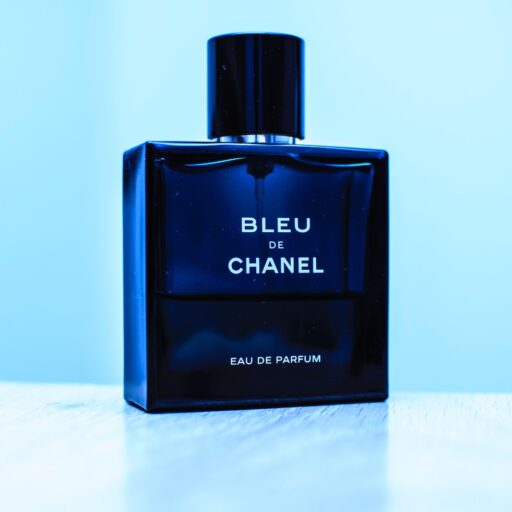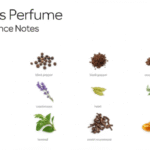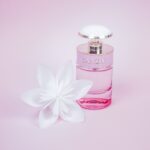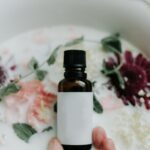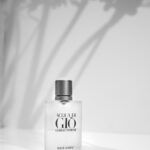Support our educational content for free when you purchase through links on our site. Learn more
Which Is Better, Parfum or Eau de Parfum? 7 Secrets Revealed! ✨ (2025)
Ever stood in front of the perfume counter, overwhelmed by the dazzling array of bottles labeled parfum, eau de parfum, eau de toilette, and wondered, “Which one should I actually pick?” You’re not alone! Choosing between parfum and eau de parfum can feel like decoding a secret language of scent. Here’s a little secret from the perfumers at Perfume Brands™: the answer isn’t as simple as “one is better than the other.” It’s about understanding what makes each unique and how they fit your lifestyle, skin, and personality.
Did you know that parfum can last up to twice as long as eau de parfum, but eau de parfum often wins for versatility and price? Intrigued? We’re about to unravel 7 insider secrets that will help you master the art of choosing your perfect fragrance concentration — and maybe even how to layer them like a pro! Ready to become your own scent expert? Let’s dive in.
Key Takeaways
- Parfum offers the highest fragrance concentration (20-40%), delivering intense, long-lasting scents perfect for special occasions and signature statements.
- Eau de Parfum (15-20%) balances longevity and versatility, making it ideal for everyday wear without overwhelming the senses.
- Skin type and occasion matter: Parfum suits dry or sensitive skin and formal events, while eau de parfum adapts well to oily skin and casual settings.
- Layering fragrances can elevate your scent game, combining the richness of parfum with the freshness of eau de parfum.
- Sustainability is on the rise: Explore eco-friendly brands that blend luxury with responsibility.
Ready to explore top parfum and eau de parfum picks? Check out our curated selections from luxury brands like Chanel, Tom Ford, and Jo Malone London.
👉 Shop Luxury Fragrances:
Table of Contents
- Quick Tips and Facts About Parfum vs Eau de Parfum 💡
- Fragrance Foundations: The History and Evolution of Parfum and Eau de Parfum 🕰️
- What Exactly Is Eau de Parfum? A Deep Dive into Its Composition and Longevity 🌸
- Parfum Power: Understanding the Strongest Fragrance Concentrations and Their Impact 💥
- Scent Science: Artificial vs Natural Fragrances – What’s Really Inside Your Bottle? 🧪
- Top 7 Irresistible Fragrance Pairings to Elevate Your Scent Game 💑
- How to Choose Between Parfum and Eau de Parfum: Skin Type, Occasion, and Personality Tips 🎯
- Application Hacks: Getting the Most Out of Your Parfum or Eau de Parfum Spray 💧
- Luxury Gifting Ideas: Why Parfum and Eau de Parfum Make the Perfect Present 🎁
- Sustainability in Fragrance: Eco-Friendly Parfum and Eau de Parfum Brands to Know 🌿
- Common Myths Debunked: Parfum vs Eau de Parfum Misconceptions Busted! 🕵️♀️
- Conclusion: Which Is Better, Parfum or Eau de Parfum? Our Expert Verdict ✔️
- Recommended Links for Fragrance Lovers 🌐
- Frequently Asked Questions (FAQ) About Parfum and Eau de Parfum ❓
- Reference Links and Further Reading 📚
Quick Tips and Facts About Parfum vs Eau de Parfum 💡
- Parfum and Eau de Parfum are differentiated by their concentration of fragrance oils, which directly impacts their strength and longevity.
- Parfum, also known as extrait de parfum, boasts the highest concentration, typically between 20% to 40%, making it the most potent and long-lasting option.
- Eau de Parfum usually contains 15% to 20% fragrance oils, offering a balance between projection and wear time.
- While parfum might seem like the obvious winner in terms of performance, it often comes with a higher price tag.
- Ultimately, the best choice depends on your personal preference, budget, and the occasion. For a deeper dive into the nuances of different fragrance types, check out our comprehensive guide on What is the most popular perfume type?.
Fragrance Foundations: The History and Evolution of Parfum and Eau de Parfum 🕰️
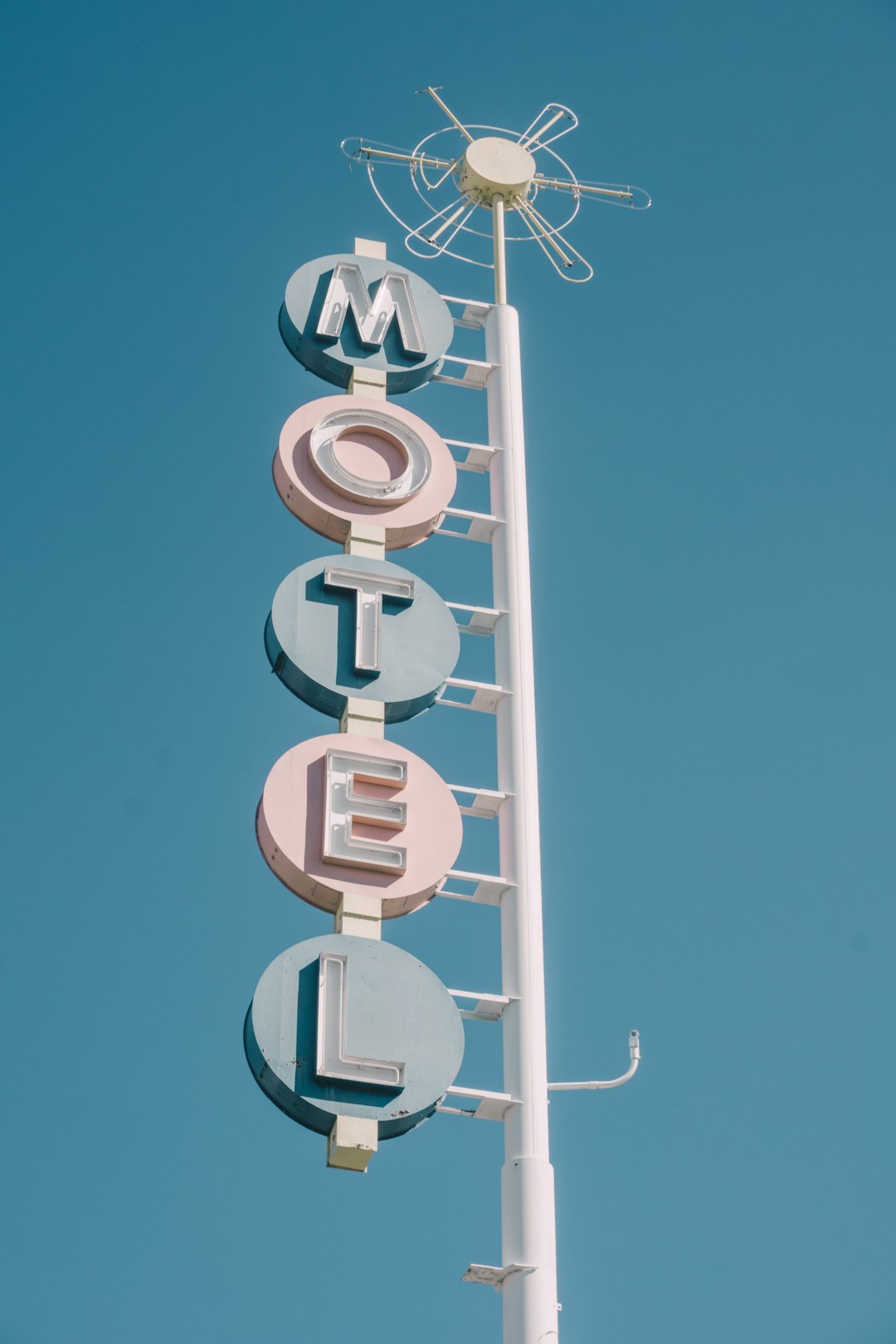
The art of perfumery dates back centuries, with ancient civilizations utilizing fragrant oils and resins for religious ceremonies, medicinal purposes, and personal adornment. The terms parfum and eau de parfum, however, emerged much later, evolving alongside advancements in distillation techniques and the increasing demand for sophisticated fragrances.
A Journey Through Time: From Ancient Scents to Modern Masterpieces
- Ancient Origins: The earliest forms of perfume can be traced back to Mesopotamia and Egypt, where fragrant materials like myrrh, frankincense, and rose were highly prized.
- The Rise of Alcohol-Based Perfumes: The use of alcohol as a solvent for fragrance extraction emerged in the Middle Ages, paving the way for more concentrated and longer-lasting perfumes.
- The Birth of Eau de Cologne: In the 18th century, Cologne, Germany, became renowned for its refreshing citrus-based fragrances, known as eau de cologne, which were lighter and less concentrated than traditional perfumes.
- The Emergence of Eau de Parfum: As fragrance preferences evolved, eau de parfum emerged as a middle ground between the intense concentration of parfum and the lighter character of eau de cologne.
What Exactly Is Eau de Parfum? A Deep Dive into Its Composition and Longevity 🌸
Eau de parfum, often abbreviated as EDP, is a popular fragrance concentration that strikes a harmonious balance between potency and wearability. It’s characterized by a higher concentration of fragrance oils compared to eau de toilette or eau de cologne, resulting in a more pronounced and enduring scent experience.
Decoding the EDP Formula:
- Fragrance Oils (15-20%): The heart and soul of any perfume, these aromatic compounds determine the scent profile and its evolution on the skin.
- Alcohol (70-85%): Acts as a solvent, carrying the fragrance oils and facilitating their evaporation, which releases the scent.
- Water (Trace Amounts): Helps to blend the ingredients and dilute the concentration.
The EDP Advantage:
- Lasting Impression: EDPs typically last for 4 to 5 hours, making them suitable for both daytime and evening wear.
- Moderate Projection: They offer a noticeable scent trail without being overpowering, striking a balance between personal enjoyment and making a statement.
- Versatility: EDPs are available in a wide range of scent profiles, from fresh and citrusy to warm and spicy, catering to diverse tastes and preferences.
Parfum Power: Understanding the Strongest Fragrance Concentrations and Their Impact 💥
At the pinnacle of fragrance intensity reigns parfum, also known as extrait de parfum or pure perfume. This luxurious concentration represents the most potent form of a fragrance, boasting an unparalleled depth and longevity that captivates the senses.
Unlocking the Essence of Parfum:
- Exceptional Concentration: Parfums typically contain 20% to 40% fragrance oils, resulting in an exceptionally rich and long-lasting scent experience.
- Unveiling the Base Notes: The high concentration allows the base notes, which are the longest-lasting elements of a fragrance, to truly shine, creating a captivating and evolving aroma.
- A Little Goes a Long Way: Due to its potency, a small amount of parfum is sufficient, making it a worthwhile investment for those seeking a truly luxurious and enduring fragrance experience.
When to Embrace the Power of Parfum:
- Special Occasions: Parfums are the perfect choice for unforgettable moments, adding an aura of sophistication and elegance to evening events, romantic dinners, or celebratory gatherings.
- Signature Scent Statement: If you have a signature fragrance that you truly adore, experiencing it in its purest form as a parfum can elevate your connection to the scent.
- Long-Lasting Luxury: For those who desire a fragrance that lingers throughout the day or night, parfum provides exceptional longevity, often lasting for 6 to 8 hours or even longer on the skin and clothing.
Scent Science: Artificial vs Natural Fragrances – What’s Really Inside Your Bottle? 🧪
The world of fragrance is a captivating blend of art and science, with both natural and artificial ingredients playing crucial roles in crafting captivating scents. Understanding the differences between these two categories can provide valuable insights into the composition, sustainability, and potential allergenic properties of your favorite perfumes.
Natural Fragrances: Derived from Nature’s Bounty
- Source: Extracted from botanical sources such as flowers, leaves, roots, resins, and essential oils.
- Examples: Rose oil, jasmine absolute, sandalwood oil, patchouli oil, bergamot oil.
- Benefits: Often prized for their complex aromas and therapeutic properties.
- Drawbacks: Can be more expensive, prone to variations in scent due to natural factors, and some individuals may have sensitivities to certain botanical extracts.
Artificial Fragrances: The Science of Scent Creation
- Source: Created synthetically in a laboratory, often mimicking natural scents or developing entirely new aroma molecules.
- Examples: Aldehydes, musks, vanillin, coumarin.
- Benefits: Can offer greater consistency in scent, longer shelf life, and potentially more affordable options.
- Drawbacks: Some synthetic ingredients have been linked to allergic reactions or sensitivities in certain individuals.
Finding the Right Balance:
The choice between natural and artificial fragrances is a matter of personal preference, ethical considerations, and sensitivity levels. Many perfumes today utilize a combination of both natural and synthetic ingredients to achieve complex and well-balanced scent profiles.
Top 7 Irresistible Fragrance Pairings to Elevate Your Scent Game 💑
Layering fragrances is an art form that allows you to create unique and personalized scent combinations that reflect your mood, style, and the occasion. By combining complementary notes from different perfumes, you can enhance the overall olfactory experience, adding depth, intrigue, and a touch of your own signature flair.
1. Citrus and Floral: A Refreshing and Romantic Fusion
- Pairing Idea: Layer a bright and zesty citrus fragrance like Atelier Cologne Clémentine California with a delicate floral scent like Jo Malone London Peony & Blush Suede.
- Result: A sparkling and uplifting aroma that’s perfect for spring and summer, evoking a sense of joy and romance.
2. Woody and Spicy: A Warm and Seductive Embrace
- Pairing Idea: Combine a smoky and alluring woody fragrance like Tom Ford Oud Wood with a warm and inviting spicy scent like Yves Saint Laurent La Nuit de L’Homme.
- Result: A captivating and mysterious aroma that’s perfect for evening wear, exuding confidence and sensuality.
3. Gourmand and Oriental: A Sweet and Alluring Indulgence
- Pairing Idea: Layer a delectable gourmand fragrance like Lancôme La Vie Est Belle with an opulent oriental scent like Guerlain Shalimar.
- Result: A luxurious and addictive aroma that’s perfect for special occasions, leaving a memorable and irresistible trail.
4. Aquatic and Green: A Fresh and Invigorating Escape
- Pairing Idea: Combine a crisp and refreshing aquatic fragrance like Giorgio Armani Acqua di Gio with a verdant and invigorating green scent like Hermès Un Jardin Sur Le Nil.
- Result: A revitalizing and clean aroma that’s perfect for daytime wear, evoking a sense of tranquility and escape.
5. Fruity and Floral: A Playful and Feminine Delight
- Pairing Idea: Layer a juicy and playful fruity fragrance like Viktor & Rolf Flowerbomb with a sweet and delicate floral scent like Marc Jacobs Daisy.
- Result: A cheerful and feminine aroma that’s perfect for casual outings, exuding a carefree and youthful spirit.
6. Leather and Tobacco: A Bold and Sophisticated Statement
- Pairing Idea: Combine a rugged and masculine leather fragrance like Tom Ford Tuscan Leather with a smoky and alluring tobacco scent like By Kilian Back to Black.
- Result: A daring and sophisticated aroma that’s perfect for making a statement, exuding confidence and individuality.
7. Powdery and Musky: A Clean and Comforting Embrace
- Pairing Idea: Layer a soft and comforting powdery fragrance like Narciso Rodriguez for Her with a warm and sensual musky scent like Juliette Has A Gun Not a Perfume.
- Result: A clean and inviting aroma that’s perfect for everyday wear, evoking a sense of comfort and intimacy.
How to Choose Between Parfum and Eau de Parfum: Skin Type, Occasion, and Personality Tips 🎯
Navigating the world of fragrance can be an exciting yet overwhelming experience, especially when faced with the choice between parfum and eau de parfum. Both offer captivating scent experiences, but understanding their nuances and how they interact with your individual preferences can help you make the perfect selection.
Skin Type Considerations:
- Sensitive Skin: If you have sensitive skin, opting for a parfum might be a better choice. The lower alcohol content can be gentler, reducing the risk of irritation.
- Dry Skin: Parfums tend to last longer on dry skin, as the oils have less moisture to evaporate from. However, if you prefer a lighter scent, an eau de parfum can still provide a satisfying experience.
- Oily Skin: Eau de parfums often project well on oily skin, as the natural oils can enhance the fragrance’s diffusion. However, if you prefer a more subtle scent, a parfum might be a better option.
Occasion and Setting:
- Formal Events: Parfums, with their exceptional longevity and projection, are the perfect choice for formal events, adding an aura of sophistication and elegance to your ensemble.
- Daytime Wear: Eau de parfums offer a balanced approach for daytime wear, providing a noticeable yet not overpowering scent that can transition seamlessly from work to evening engagements.
- Casual Outings: For casual outings or everyday wear, you can opt for either parfum or eau de parfum, depending on your personal preference and the intensity of the fragrance.
Personality and Scent Style:
- Bold and Confident: If you enjoy making a statement with your fragrance, a parfum’s powerful sillage and long-lasting aroma can complement your bold personality.
- Subtle and Refined: For those who prefer a more understated and elegant approach to fragrance, an eau de parfum offers a balanced and refined scent experience.
- Romantic and Feminine: Floral, fruity, or powdery fragrances in either parfum or eau de parfum can enhance a romantic and feminine aura.
- Mysterious and Alluring: Oriental, woody, or spicy scents in parfum or eau de parfum can create an air of mystery and allure.
Application Hacks: Getting the Most Out of Your Parfum or Eau de Parfum Spray 💧
Applying fragrance is an art in itself, and mastering the techniques can significantly enhance the longevity and projection of your chosen scent. Whether you prefer the concentrated richness of parfum or the balanced elegance of eau de parfum, these application hacks will help you maximize their olfactory impact.
Pulse Point Power:
- Target Warm Areas: Apply fragrance to pulse points like your wrists, neck, behind the ears, and inside the elbows. These areas generate heat, which helps diffuse the scent.
- Don’t Rub: Avoid rubbing your wrists together after applying fragrance, as this can crush the delicate top notes and alter the scent’s evolution.
Strategic Spritzing:
- Walk Through a Mist: For a subtle and even distribution, spray fragrance in front of you and walk through the mist. This allows the scent to settle gently on your skin and hair.
- Hair Application: Lightly mist your hairbrush with fragrance and brush through your hair for a subtle and long-lasting scent trail. Avoid spraying directly on hair, as the alcohol content can be drying.
Layering for Longevity:
- Matching Scents: Layer your chosen fragrance with matching scented body wash, lotion, or oil to enhance the longevity and create a cohesive scent experience.
- Strategic Placement: Apply a small amount of unscented lotion or oil to pulse points before spraying fragrance. This can help the scent adhere better and last longer.
Luxury Gifting Ideas: Why Parfum and Eau de Parfum Make the Perfect Present 🎁
In the realm of gifting, few gestures convey thoughtfulness and appreciation quite like a beautifully crafted fragrance. Parfums and eau de parfums, with their captivating scents and luxurious appeal, make exceptional presents for special occasions, milestones, or simply to express your affection for someone dear.
The Allure of a Thoughtful Scent:
- Evoking Memories: Fragrances have a unique ability to evoke memories and emotions, making them a deeply personal and meaningful gift.
- Expressing Personality: Choosing a fragrance that complements the recipient’s personality and style demonstrates thoughtfulness and consideration.
- A Touch of Luxury: Parfums and eau de parfums, often presented in elegant bottles and packaging, add a touch of luxury and indulgence to any gifting occasion.
Gifting Inspiration:
- For the Romantic: Consider a classic floral fragrance like Chanel No. 5 or a modern romantic scent like Viktor & Rolf Flowerbomb.
- For the Adventurer: Opt for a fresh and invigorating aquatic fragrance like Davidoff Cool Water or a woody and spicy scent like Terre d’Hermès.
- For the Sophisticate: Choose a timeless and elegant fragrance like Guerlain Shalimar or a modern classic like Tom Ford Black Orchid.
Sustainability in Fragrance: Eco-Friendly Parfum and Eau de Parfum Brands to Know 🌿
As consumers become increasingly conscious of their environmental impact, the fragrance industry is witnessing a surge in sustainable and eco-friendly practices. From ethically sourced ingredients to eco-conscious packaging, these forward-thinking brands are leading the way in creating fragrances that are both luxurious and responsible.
Key Considerations for Sustainable Fragrance:
- Natural and Organic Ingredients: Look for fragrances crafted with a high percentage of natural and organic ingredients, minimizing the use of synthetic chemicals and pesticides.
- Ethical Sourcing: Support brands that prioritize fair trade practices and sustainable harvesting methods, ensuring the well-being of farmers and the environment.
- Eco-Conscious Packaging: Opt for fragrances housed in recyclable, reusable, or biodegradable packaging, reducing waste and minimizing environmental impact.
- Cruelty-Free Practices: Choose brands that are committed to cruelty-free practices, meaning they do not test their products on animals.
Sustainable Fragrance Brands to Explore:
- Aftelier Perfumes: Known for their exquisite natural perfumes crafted with rare and ethically sourced botanicals.
- Floratopia: Offers a collection of vegan and cruelty-free fragrances inspired by the beauty of nature.
- Henry Rose: Founded by Michelle Pfeiffer, this brand prioritizes transparency and sustainability, using safe and ethically sourced ingredients.
- Sana Jardin: This luxury fragrance house operates on a unique “flower-to-bottle” model, empowering women in Morocco through sustainable sourcing and production.
Common Myths Debunked: Parfum vs Eau de Parfum Misconceptions Busted! 🕵️♀️
The world of fragrance is often shrouded in mystery, leading to common misconceptions about different fragrance concentrations, particularly when it comes to parfum and eau de parfum. Let’s debunk some of these myths and shed light on the truth behind these captivating scents.
Myth 1: Parfum Is Only for Women, Eau de Parfum Is for Men
- Reality: Fragrance has no gender! Both parfum and eau de parfum are available in a wide range of scent profiles, catering to diverse tastes and preferences, regardless of gender.
Myth 2: Parfum Is Overpowering, Eau de Parfum Is More Subtle
- Reality: While parfum generally has a stronger projection and longevity due to its higher fragrance oil concentration, the actual intensity and sillage can vary significantly depending on the specific fragrance’s composition and the individual’s skin chemistry.
Myth 3: Eau de Parfum Is a Waste of Money, Parfum Lasts Longer
- Reality: Both parfum and eau de parfum offer unique advantages. While parfum provides exceptional longevity, eau de parfum strikes a balance between performance and affordability, making it a worthwhile investment for those seeking a noticeable yet not overpowering scent experience.
Myth 4: You Can’t Layer Parfum, It’s Too Strong
- Reality: Layering fragrance is an art form that allows for endless creativity, and parfum can be incorporated into layering combinations with finesse. Start with a small amount and experiment with different scent pairings to find what works best for you.
Conclusion: Which Is Better, Parfum or Eau de Parfum? Our Expert Verdict ✔️
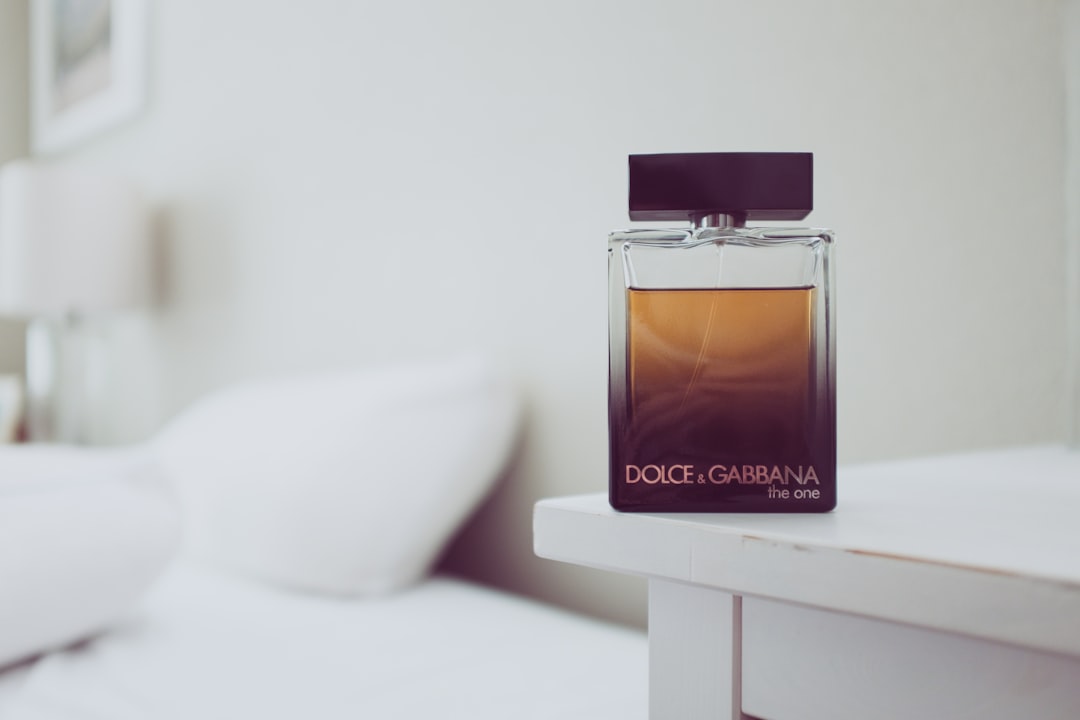
After our deep dive into the fragrant world of parfum and eau de parfum, here’s the bottom line from the perfumers at Perfume Brands™: Neither is inherently better — it all boils down to your lifestyle, preferences, and budget.
Parfum dazzles with its intense concentration (20-40%), delivering long-lasting, rich, and evolving scents that can linger for 6 to 8 hours or more. It’s perfect for those special occasions or when you want to make a bold, luxurious statement. However, its potency and price point mean it’s not always the go-to for everyday wear.
On the other hand, Eau de Parfum (EDP) offers a balanced concentration (15-20%) that provides excellent longevity (4-5 hours) and a more versatile scent profile suitable for daily use. EDPs tend to be more affordable and easier to wear in a variety of settings, from office hours to evening outings.
Our recommendation? If you’re looking for a signature scent that lasts all day and night and don’t mind investing a bit more, parfum is your best friend. But if you want something flexible, approachable, and still impactful, eau de parfum is a stellar choice.
Remember, the magic of fragrance lies not just in concentration but in how it interacts with your skin, mood, and personality. So, don’t hesitate to sample both types and layer them with complementary products for a truly bespoke scent experience.
Ready to explore? Dive into our Perfume Guides and Luxury Brands sections for expert reviews and recommendations!
Recommended Links for Fragrance Lovers 🌐
Looking to shop or learn more about the exquisite perfumes and eau de parfums we mentioned? Check these out:
- Chanel No. 5 Parfum:
Amazon | Chanel Official Website - Viktor & Rolf Flowerbomb Eau de Parfum:
Amazon | Viktor & Rolf Official - Tom Ford Oud Wood Parfum:
Amazon | Tom Ford Official - Guerlain Shalimar Parfum:
Amazon | Guerlain Official - Jo Malone London Peony & Blush Suede Eau de Parfum:
Amazon | Jo Malone Official
Books to deepen your fragrance knowledge:
- Perfumes: The A-Z Guide by Luca Turin & Tania Sanchez — Amazon
- The Art of Perfumery by G.W. Septimus Piesse — Amazon
Frequently Asked Questions (FAQ) About Parfum and Eau de Parfum ❓

What is the difference between parfum and eau de parfum in terms of longevity and scent strength?
Parfum contains a higher concentration of fragrance oils (20-40%), which means it generally lasts 6 to 8 hours or more on the skin and has a stronger, richer scent profile. Eau de Parfum typically has 15-20% fragrance oils, offering a lasting scent of 4 to 5 hours with moderate projection. The higher oil content in parfum also means it evolves more slowly, revealing complex base notes over time. However, individual skin chemistry and application methods can affect this.
How do I choose between parfum and eau de parfum for everyday use, considering factors like skin type and personal preference?
If you have sensitive or dry skin, parfum can be gentler due to its lower alcohol content and oil-rich formula, which also helps it last longer. For oily skin, eau de parfum may project better but can sometimes feel heavier. For everyday wear, eau de parfum is often preferred due to its balance of longevity and subtlety. Your personal scent style matters too: if you want a bold signature scent, parfum is ideal; for lighter, versatile wear, eau de parfum fits the bill.
Are parfum and eau de parfum concentrations the same across all perfume brands, or do some brands have unique formulations?
While industry standards place parfum at 20-40% and eau de parfum at 15-20% fragrance oil concentration, formulations can vary by brand and fragrance. Some luxury houses may tweak concentrations slightly to achieve a desired scent profile or wear experience. For example, Carner Barcelona crafts eau de parfums with a focus on balance and skin comfort, sometimes leaning toward lower alcohol content for sensitivity. Always sample before committing!
Do parfum and eau de parfum have different price points, and is one generally more expensive than the other in the world of luxury perfume brands?
✅ Yes. Parfum is generally more expensive than eau de parfum due to its higher concentration of costly fragrance oils and more complex production. Luxury brands like Chanel, Tom Ford, and Guerlain price parfums at a premium, reflecting their richness and longevity. Eau de parfums offer a more affordable yet still luxurious alternative, making them accessible for daily use without sacrificing quality.
Can I layer parfum and eau de parfum together for a unique scent?
Absolutely! Layering allows you to customize your fragrance experience. Start with a light spray of eau de parfum and add a small amount of parfum on pulse points to enhance depth and longevity. Just be mindful of the scent families to avoid clashing notes. Layering is a fun way to express your personality and create a signature scent.
How should I store parfum and eau de parfum to maintain their quality?
Keep your fragrances in a cool, dark place away from direct sunlight and temperature fluctuations. Heat and light can degrade fragrance oils and alter the scent. Avoid storing them in bathrooms where humidity fluctuates. Proper storage preserves the integrity and longevity of your parfum and eau de parfum.
Reference Links and Further Reading 📚
- Hotel Chocolat: What’s the difference between eau de parfum and eau de toilette?
- Arran Sense of Scotland: Eau de Toilette vs Eau de Parfum
- Carner Barcelona: Eau de parfum, eau de toilette, cologne… What is the real difference?
- Chanel Official Website
- Tom Ford Beauty
- Jo Malone London
- Guerlain
- Viktor & Rolf
- Perfume Brands™ Perfume Guides
- Perfume Brands™ Luxury Brands
Dive into these resources to continue your fragrant journey and become the scent connoisseur you were destined to be! 🌟
